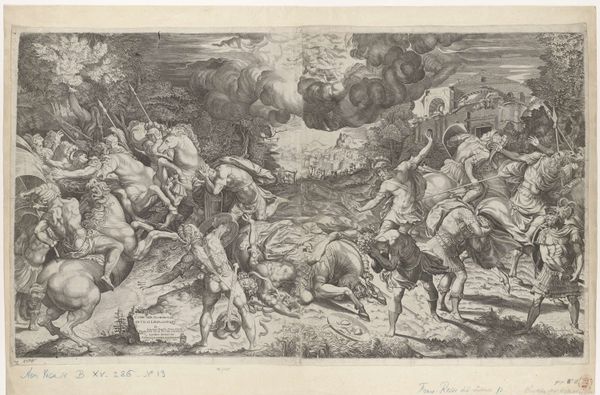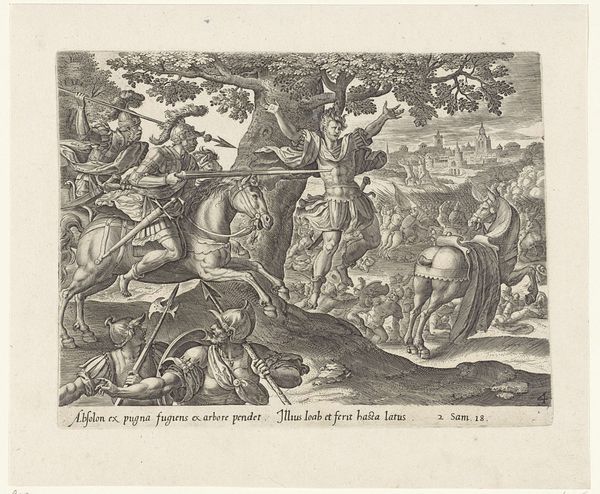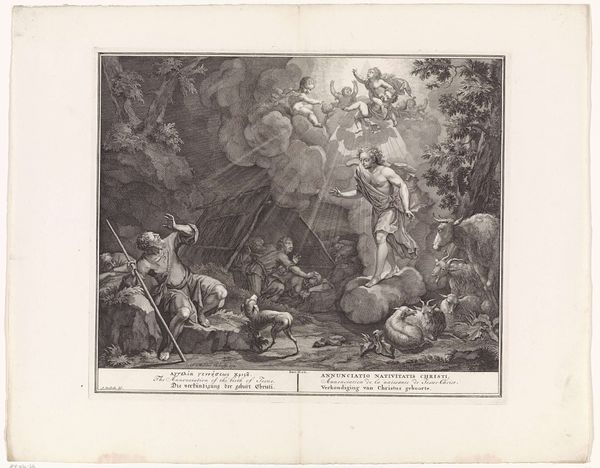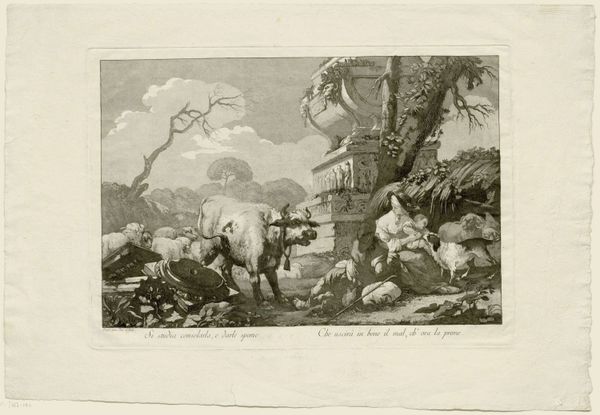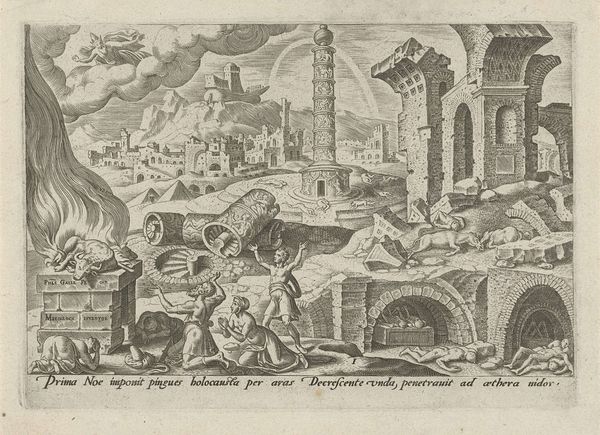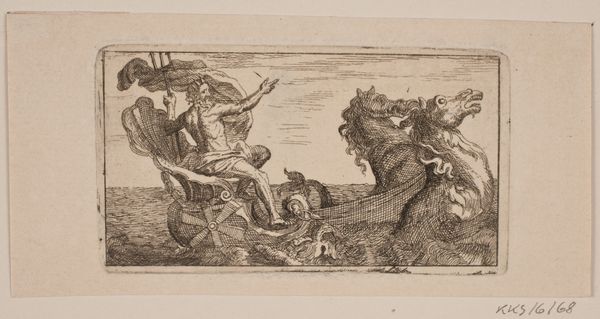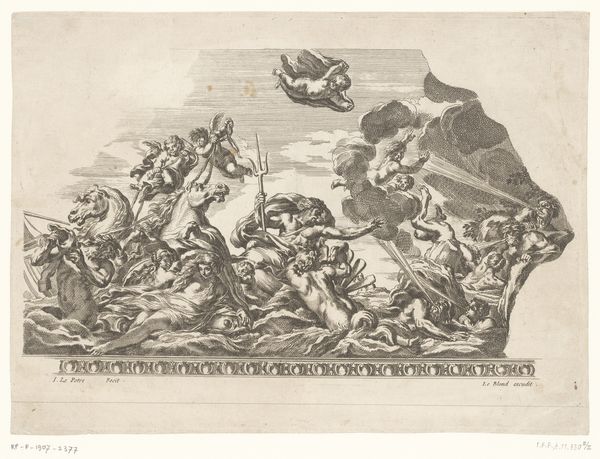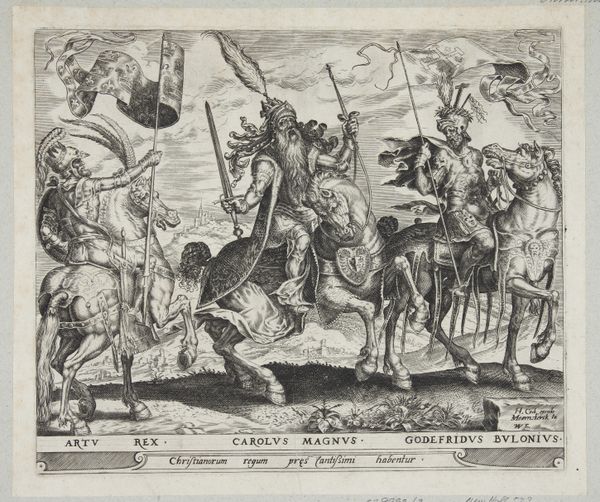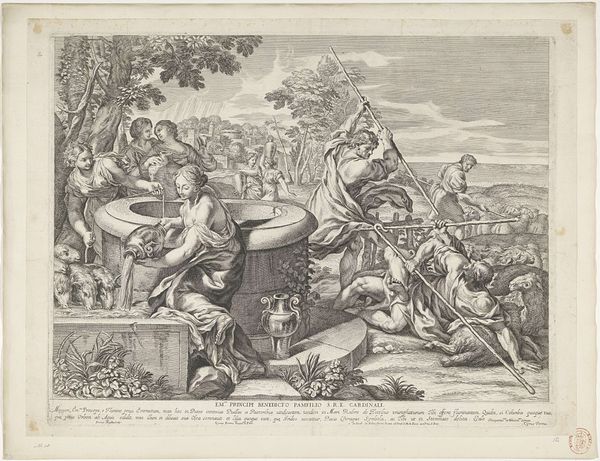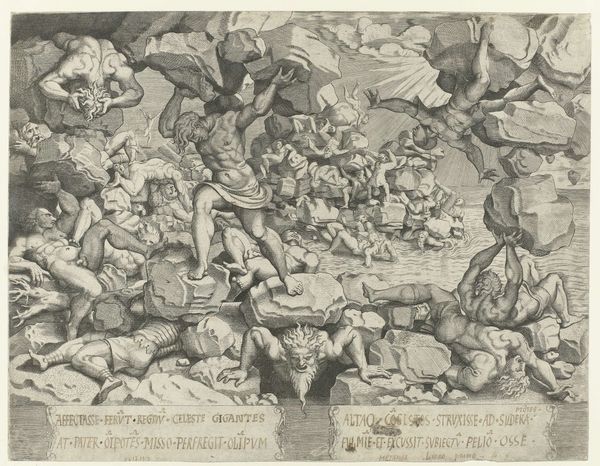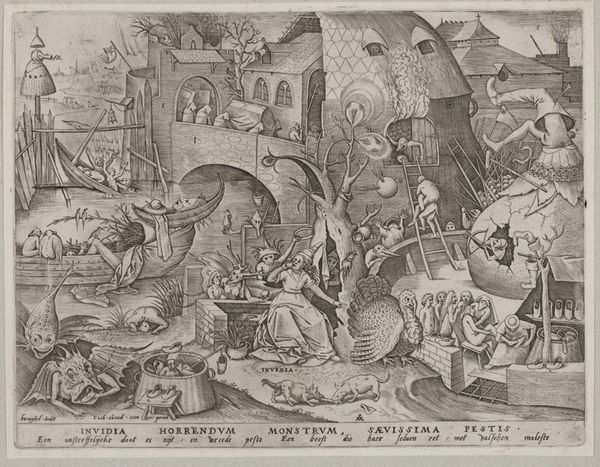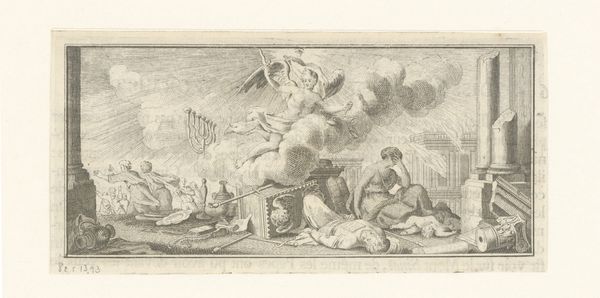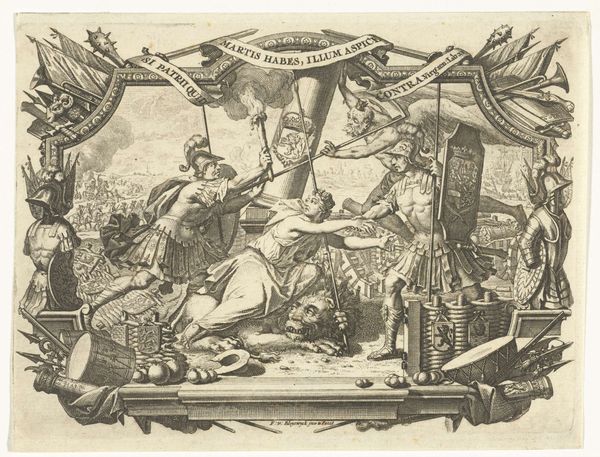
print, engraving
#
allegory
#
narrative-art
#
baroque
# print
#
old engraving style
#
figuration
#
line
#
history-painting
#
engraving
Dimensions: height 277 mm, width 381 mm
Copyright: Rijks Museum: Open Domain
Curator: Ah, yes, Jan (II) Smit's engraving, "Allegorie op de verheffing van Willem IV," created in 1747. A flurry of activity isn’t it? It looks like an allegorical depiction connected to William IV's rise to power, showcasing a particular moment in Dutch history through the reproducible medium of print. Editor: Whew! Overload. It looks more like a political cartoon, an enthusiastic mess of symbols wrestling for attention. My first thought is—busy! Curator: Indeed. Smit uses the print medium here not just to decorate, but as a crucial mode of communicating political sentiment widely. Note the deliberate linear quality achieved through engraving; the stark contrast lends immediacy to the subject and promotes clarity. Think of the accessibility! Editor: The more I look, the more those precise lines resemble barbed wire. A lion, a rooster, what’s that...a dragon?—they’re all jammed behind a wall! Are those the "good" animals hemmed in, and is William about to burst through and free them? Curator: It's more layered than that, naturally. The menagerie you mention serves as symbolic representations of political factions, the impending ship an emblem of trade, each element woven into a narrative about the political climate surrounding William IV. The materiality of the engraving, the availability of its message to multiple viewers… It all speaks to an engagement with shaping public opinion. Editor: I see a female figure elevated, literally, on what looks like a castle turret; cherubs dancing overhead. Is this glorifying Willem? Or, through caricature and this almost comic book style, offering sly criticism? The print *itself* becomes the method. Curator: Precisely! The mass-produced nature, its accessibility in terms of cost and widespread distribution…it implicates the *viewer* in that moment, too. They are meant to become active participants in processing and propagating this very specific viewpoint. Consider this print a cog in a much larger apparatus designed to galvanize a nation. Editor: Right, this wasn’t some rarefied painting hung in a palace, but essentially visual propaganda accessible on the streets. So, this chaotic swirl of meaning was meant to reach as many eyes as possible and drive home a message through symbolism anyone could quickly grasp. A vital point in its own distribution and social context. Curator: Exactly. Looking closer at process helps us re-imagine the potent capabilities inherent to visual culture of this era. Editor: I guess it just reveals the artfulness often lurking beneath supposedly objective historical documents. Now, that gives me even more to think about...
Comments
No comments
Be the first to comment and join the conversation on the ultimate creative platform.
